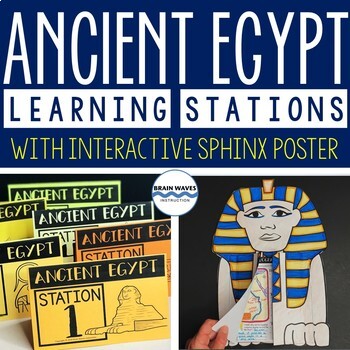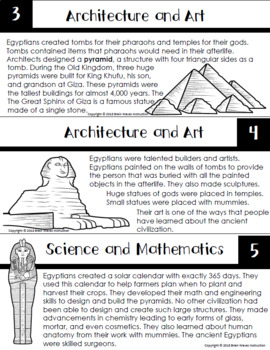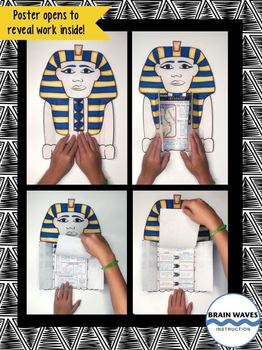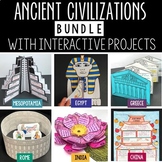Ancient Egypt Learning Stations, Sphinx Poster, Ancient Egypt Activities
- PDF
What educators are saying
Also included in
- This Ancient Civilizations Bundle includes 6 resources for teaching Mesopotamia, Ancient Egypt, Ancient China, Ancient India, Ancient Greece and Ancient Rome. Each resource includes learning activities to help students learn about each civilization’s geography, religion, achievements, politics, econPrice $35.99Original Price $49.94Save $13.95
Description
This resource contains six ancient Egypt learning stations that students can rotate through in small groups. Each learning station (or center) is designed to give students engaging and exciting learning experiences to practice, enrich, review, and enhance their learning. Students will visit each station with a small group and complete ancient Egypt activities.
How cool is this? Students will create an interactive sphinx to showcase their learning. They’ll “build” flip-able parts of the sphinx poster while they progress through the stations. Working both independently and with their small groups, students will have multiple opportunities to develop their understanding of ancient Egypt while they investigate its geography, religion, accomplishments, politics, economics, and society. Then, they’ll put together a sphinx poster that opens up to reveal their learning!
About the Learning Stations:
The Ancient Egypt learning centers or stations are based on the Common Core elements for Social Studies: Geography, Religion, Achievements, Politics/Government, Economy, and Society
STATION 1: GEOGRAPHY
Students learn about the geography of ancient Egypt as they label, color in a map and complete guided notes.
STATION 2: RELIGION
At this station students learn about the religion of ancient Egypt. First, they’ll read a passage. Then, students will complete a cause and effect chart.
STATION 3: ACHIEVEMENTS
Students read a series of reading cards to learn about 5 of ancient Egypt’s significant achievements. Then, fill in several charts to show what they’ve learned.
STATION 4: POLITICS
Students will learn about the Egyptian government in their small groups. Then, they’ll use their knowledge to answer questions on puzzle pieces. They’ll put the puzzle together on their poster.
STATION 5: ECONOMY
At this station students will learn about the economy of ancient Egypt. They’ll collect facts and doodle, too!
STATION 6: SOCIETY
Students will learn about the class structure in ancient Egypt’s civilization. They’ll cut and sort to create a social class pyramid.
ALL STATIONS: VOCABULARY
Students will travel with a vocabulary tracker to each learning station. They’ll collect critical vocabulary and record the definitions as they work.
ABOUT THE INTERACTIVE SPHINX POSTER
Students will easily create an interactive sphinx poster. Each page that they complete during the learning centers will be stacked and placed “inside” the sphinx poster. Then, they’ll create “doors” around their work to reveal a flip-able record of their work inside the poster! It's easy to create, and the "wow factor" can't be beat!
INCLUDED IN THIS DETAILED RESOURCE:
This resource is absolutely turn-key! Everything you need is included!
- Station Implementation Guide
- Station Grade Tracker
- Station Vocabulary Worksheet
- Station Table Labels (6)
- Teacher Resources - Detailed Station Overview and Set-Up Guides (7)
- Station Materials (reading passages, directions, reading cards, maps, student directions, puzzle pieces, sphinx poster worksheets)
- Step-by-Step guide for make the interactive sphinx poster
- Keys (for all station activities)
You might also like...
Geography Doodle Vocabulary – 50 Words!
Ancient Mesopotamia Learning Stations and 3-D Ziggurat
Speech Analysis Unit --- Reading, Analyzing, Researching, Presenting
Classroom Decor Pack - Black and Gold
Following is Fun!
Get the inside scoop on all store discounts, free products, and product launches. Just click the green “Follow Me” star under my store name on this page or click the green “Follow Me” star on my store homepage.
Let’s Stay in Touch!
*** Click HERE to receive the Brain Waves Instruction Newsletter filled with exclusive FREEBIES and Teaching Tips!
Thanks!
Brain Waves Instruction






